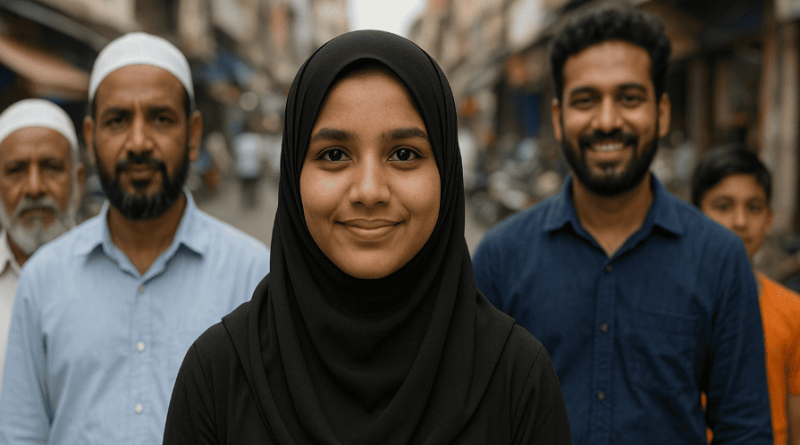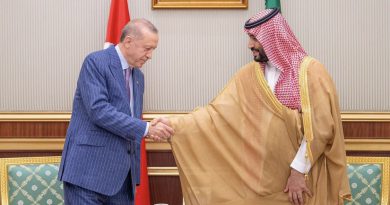OPINION : Beyond the Rusted Narrative—Indian Muslims Are Rising
Indian Muslims are not just part of India’s future. They are helping to create it.
A popular narrative aggressively pushed in the international media is that Indian Muslims are oppressed, unsafe, and voiceless. Unfortunately, many—both within and outside India—still buy into this rusted propaganda. It paints a bleak picture of victimhood and exclusion, often ignoring the lived realities and actual progress of Muslims across the country.
But beyond this outdated and politically motivated narrative lies a far brighter, bolder, and more grounded truth: Indian Muslims are not just surviving—they are thriving. From civic activism in Delhi’s Seelampur to entrepreneurship in Bengaluru, from World Cup victories to legal advocacy, Muslims across India are shaping their identity through education, democratic participation, innovation, and resilience.
Community Participation: Grassroots Power and Local Leadership
From narrow lanes to open fields, from rural bastis to urban settlements, Muslim communities are quietly but powerfully transforming their surroundings. In places like Seelampur in Delhi, Kishanganj in Bihar, and parts of Hyderabad and Bengaluru, locals are coming together to run evening schools, healthcare camps, and vocational training centers.
What makes this effort remarkable is its community-led nature. Whether it’s women teaching literacy in local madrasas, youth groups spreading digital awareness, or NGOs providing scholarships, Muslims are choosing action over apathy, proving that true change begins from within. These initiatives show how local efforts can create national impact, and how compassion, unity, and service define real leadership.
Across India, Muslims are participating in democracy with greater conviction and clarity. From voting in record numbers to contesting panchayat, municipal, and state elections, the community is increasingly aware that political engagement is empowerment.
Parties like the Indian Union Muslim League (IUML) in Kerala and All India United Democratic Front [AIUDF] in Assam have long reflected strong regional aspirations. Meanwhile, new political energies are rising, with youth-led forums, independent candidates, and Pasmanda coalitions pushing for inclusive representation.
Rather than being boxed into stereotypes or reduced to a “vote bank,” Muslims today are asserting their place in politics as equal stakeholders in the Indian democratic project.
Socio-Economic Growth: A Quiet Revolution
Despite socio-economic challenges, Indian Muslims are turning adversity into opportunity. Across the country, young Muslims are breaking generational barriers, entering fields like technology, law, medicine, digital media, and entrepreneurship. Startups run by Muslims in Bengaluru and Hyderabad are making headlines, while artisans from Kashmir to Tamil Nadu are reviving traditional crafts with global flair.
Pasmanda Muslims in particular are embracing change with boldness – sending their children to school, seeking skill-based jobs, and tapping into government and private opportunities. The growth of community microfinance, women-run cooperatives, and online learning platforms is enabling them to step into a new era of progress with confidence.
This quiet revolution is powered by faith, family, education, and a determination to create a better tomorrow.
From bustling marketplaces to tech startups, Muslim entrepreneurs are innovating, building, and thriving. Their businesses, be it in food, textiles, fashion, or digital spaces blend traditional skills with modern innovation, creating employment and preserving cultural legacies.
More Muslim women and youth are entering business with confidence, supported by community-led initiatives and digital platforms. Their success stories are inspiring and show that talent and hard work know no barriers. Muslim entrepreneurs are not just economic contributors, they’re culture-keepers, job creators, and visionaries building a better tomorrow.
Civic Participation: Youth, Women, and New Voices Rising
Indian Muslims are no longer waiting to be included-they are making space for themselves. From campus activism to legal advocacy, from media awareness campaigns to environmental initiatives, Muslim youth are at the forefront of civic change. Students from institutions like Jamia Millia Islamia and Aligarh Muslim university, are building coalitions across communities to protect constitutional values and ensure everyone’s voice is heard.
Indian Muslim women are leading too — organizing health awareness drives, running schools, and becoming lawyers, entrepreneurs, and elected representatives. Their courage is reshaping the narrative and inspiring future generations to aim higher.
In stadiums across the nation, Indian Muslims are not only participating in sports, they are excelling, inspiring, and breaking barriers. Their achievements are rewriting narratives and reaffirming that talent knows no religion, only determination and dreams.
Take the example of Mohammed Shami, whose breathtaking performance in the 2023 Cricket World Cup was not just about wickets — it became a symbol of national pride. From humble beginnings in Uttar Pradesh to becoming India’s strike bowler, Shami’s journey inspired millions, transcending religious divides and uniting cricket fans across communities.
Alongside him, Mohammed Siraj has emerged as a fast-bowling force, celebrated not just for his talent, but for his emotional journey, including his tribute to his late father during India’s historic win in Australia.
In tennis, Sania Mirza stands as an icon of women’s empowerment and sporting excellence. As a Muslim woman who dominated global tennis rankings while proudly embracing her identity, Sania has become a role model for girls across India — especially from minority communities — proving that boundaries are meant to be broken.
Young Muslim athletes are also rising in sports like football, wrestling, boxing, and athletics. Across Kashmir, Kerala, Hyderabad, and West Bengal, local tournaments often spotlight Muslim talents, many of whom come from modest backgrounds and dream of representing India on the world stage. Academies and training camps run in community centers and minority-dominated areas are nurturing these dreams, showing how access and encouragement can change lives.
Importantly, young Muslim women are claiming their space in the sporting world too. Initiatives like Girls Kick Football Academy , and rising stars in boxing like Tabassum Pasha, are leading a quiet revolution – challenging stereotypes, inspiring the next generation, and reminding the nation that the future of Indian sports lies in its diversity.
In every sprint, serve, and six, these athletes reflect a spirit of resilience and unity. Their stories remind us that sports, at its best, mirrors the country we aspire to be — inclusive, aspirational, and full of heart.
Representation: From Silence to Strength
For too long, the question of Muslim representation in India was limited to numbers. But today, it is about voice, visibility, and value. Whether in law courts, newsrooms, legislatures, or classrooms, Muslims are demanding and gaining spaces that reflect their realities and ambitions.
What’s heartening is that the new wave of leadership is not confined to religion or identity alone. It is intersectional, inclusive, and idea-driven. From Pasmanda activists to Hindu-Muslim coalitions, from Muslim women’s rights defenders to secular regional parties: the message is clear: Muslims are no longer on the margins. They are shaping the center.
India’s Muslim community, with its rich cultural legacy and youthful energy, is moving forward with purpose and pride. They are not just surviving, they are building, learning, leading, and contributing to the national vision of progress and pluralism.
As this vibrant community continues to dream, organize, and uplift one another, one truth becomes more visible than ever: Indian Muslims are not just part of India’s future. They are helping to create it.
Disclaimer: Views expressed by writers in this section are their own and do not reflect Milli Chronicle’s point-of-view.



